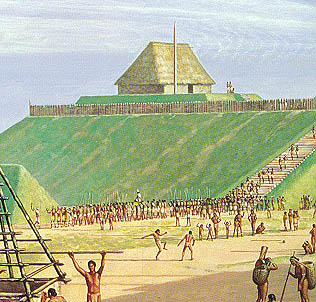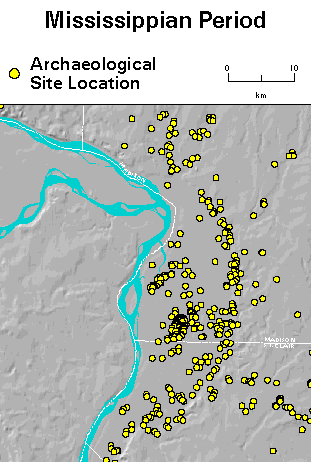
Grand Plaze at Cahokia - the center of an integrated complex chiefdom?
The traditional model of a highly integrated, complex
chiefdom with all power emanating from Cahokia requires a
radical restructuring of earlier societies. According to
this model less powerful chiefs throughout the American Bottom were
quickly and totally supplanted by the Cahokia elite by the
Stirling Phase, if not somewhat earlier (perhaps the Lohmann phase). After that time, all socio-political and
religious functions were determined by the Cahokia elite;
their directives were passed down to their subordinates in
outlying communities through well-defined religious and
political institutions via civic and religious specialists.
Accordingly, the traditional model views the demise of
Mississippian society throughout the American Bottom as a
direct result of the collapse of Cahokia itself. In short,
the traditional model is a top-down approach to
understanding culture change.

Cahokia and other Mississippian sites in and near the American Bottom